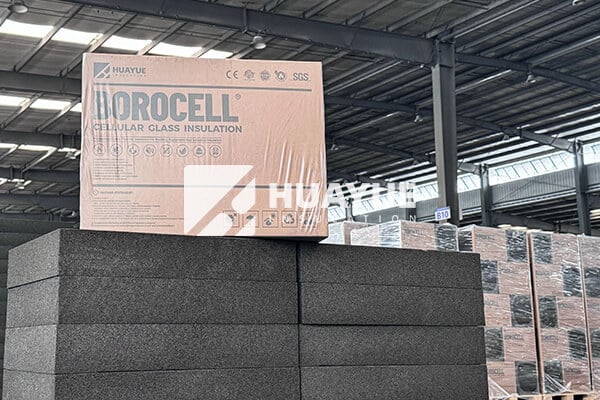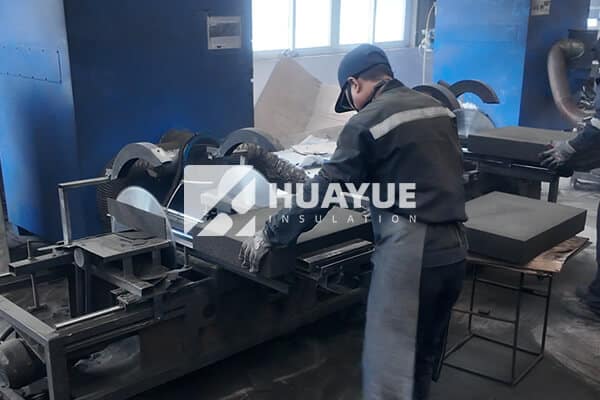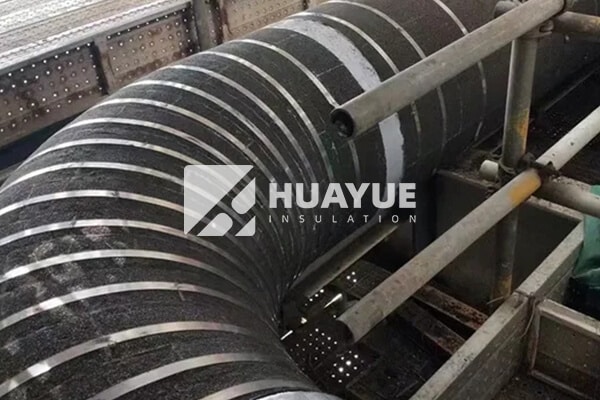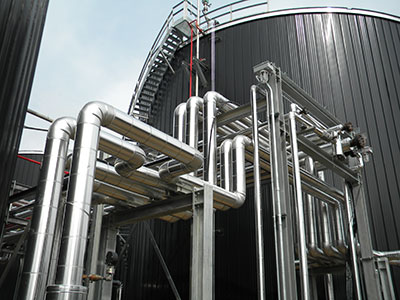Many customers are worried about the long-term safety of tank insulation. Material composition is the key to performance and peace of mind.
Cellular glass is made almost entirely from high-quality glass, combined with a foaming agent. This unique structure delivers unmatched insulation, fire resistance, and zero water absorption for industrial applications.

Over the years, I have learned that the makeup of insulation materials is not just technical detail—it is directly related to what matters most: safety, savings, and long-term results. Small differences in material source or manufacturing process become big factors in field performance. Keep reading, and I will break down how the ingredients and process deliver the results we depend on.
How is cellular glass made?
People are often puzzled by how a brittle, heavy material like glass can transform into something as tough, lightweight, and insulating as cellular glass.
Cellular glass is made by crushing high-quality glass into a powder, mixing it with a foaming agent such as carbon, then heating the mix in a furnace so it expands—creating closed, airtight bubbles.

I have watched the cellular glass production flow start from crushing clear, pure glass cullet—HUAYUE uses only self-produced, top-grade glass for this. No scraps, no second-rate substitutes. This crushed glass gets dusted with a tiny amount of carbon-based foaming agent. Once mixed, it is heated to high temperatures in a kiln. The heat causes the foaming agent to release gas, expanding the molten glass into a foam full of tiny, sealed bubbles. When cooled, this forms a rigid, uniform block of cellular glass. Unlike some competitors, we never glue broken pieces back together. Every piece that does not meet our strict standards goes out, not into your order. You can see this in the finished product—no big holes on the surface, no jagged cuts, just straight edges and absolutely even bubbles through every section. Hidden shortcuts in manufacturing become real problems for customers—uneven insulation, risky joints, poor fire performance. That is why the full-process control from raw glass to finished panel is everything.
The inorganic safety insulation
Many customers working with chemical or cryogenic tanks need to know: “How safe is cellular glass for demanding industrial applications?”
Cellular glass is entirely inorganic, will not burn, will not absorb moisture, and will not react chemically—making it the safest and most reliable insulation for critical tanks and process lines.

This is a big reason why I recommend cellular glass when safety comes first. Because it has no flammable or organic content, it cannot feed fire or degrade in humid or aggressive atmospheres. Picture a foam glass panel: it is like a wall made of millions of tiny glass bubbles. Fire can hit one side, but heat and flames will not cross to the other. Moisture cannot get in, even after years of outdoor or buried service. Unlike organic foams or glued-together products that can hide invisible threats (think: corrosion under insulation, water leaks, slow decay), true cellular glass stays unchanged decade after decade. At HUAYUE, our strict no-glue, no-joint policy also exits bad pieces from the production line. Every panel out of our line keeps your tank system safe from the inside out.
Properties of cellular glass insulation
Engineers often ask, “What are the real performance properties of cellular glass insulation?”
Cellular glass provides outstanding thermal insulation, total water and vapor resistance, excellent fire protection, high compressive strength, and unmatched chemical stability—making it ideal for tanks, pipelines, and cold storage.
When you touch a cut edge of our panels, you can see the difference. The bubbles are evenly sized. They lock in air, which means the material resists heat flow very well. Because these bubbles are all sealed and surrounded by pure glass, water cannot enter or migrate. In practice, this means a tank using our foam glass panels can keep inside temperatures steady for decades without water soaking in or insulation breaking down. In case of fire, the insulation does not burn, smoke, or drop dangerous debris. For high load areas, cellular glass stands up to compression and does not sag like foam over time. Customers who have switched to our product often tell me how much lower their maintenance costs are, and how much longer their tank linings last. These benefits all come down to the quality of raw glass, the evenness of expansion, and the total rejection of glued joints or patched panels.
Durable and sustainable
With so many materials on the market, tank owners want to know: “How long will cellular glass last—and is it really sustainable?”
Cellular glass lasts for decades because it cannot rot, burn, or break down, and it is made from fully recyclable glass—making it a top sustainable choice for both safety and the planet.
When I look at a project’s lifecycle from start to finish, I consider how often maintenance crews really want to open up insulation just to replace wet, moldy, or damaged lining. By using only high-purity, in-house produced glass for our foam glass, HUAYUE eliminates outside risks that cause early failure. The panels are not only “good as new” after years—they are also easy to recycle and do not pollute water or soil, unlike some synthetic materials. Clients in Europe especially care about CO₂ savings, which is why they love that our finished panels have no organic glue, no toxic breakdown, and no harmful off-gassing as they age. This commitment to real, long-term durability is part of why HUAYUE has built trusted partnerships worldwide for over twenty years.
Conclusion
Cellular glass owes its unique advantages to its pure glass content, even bubble structure, and strict no-glue manufacturing—making it the safest, most reliable, and most durable insulation for demanding industrial projects.

